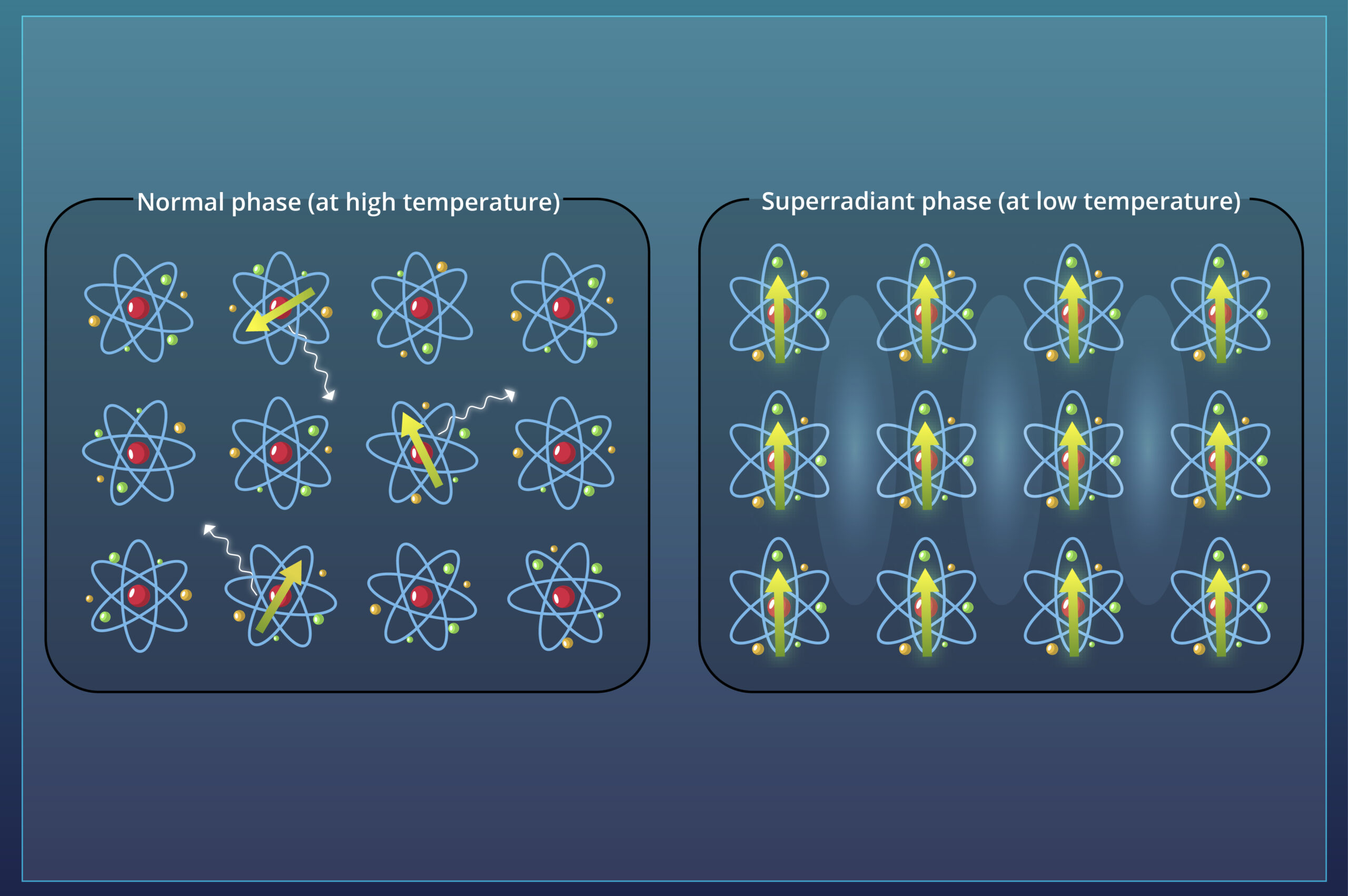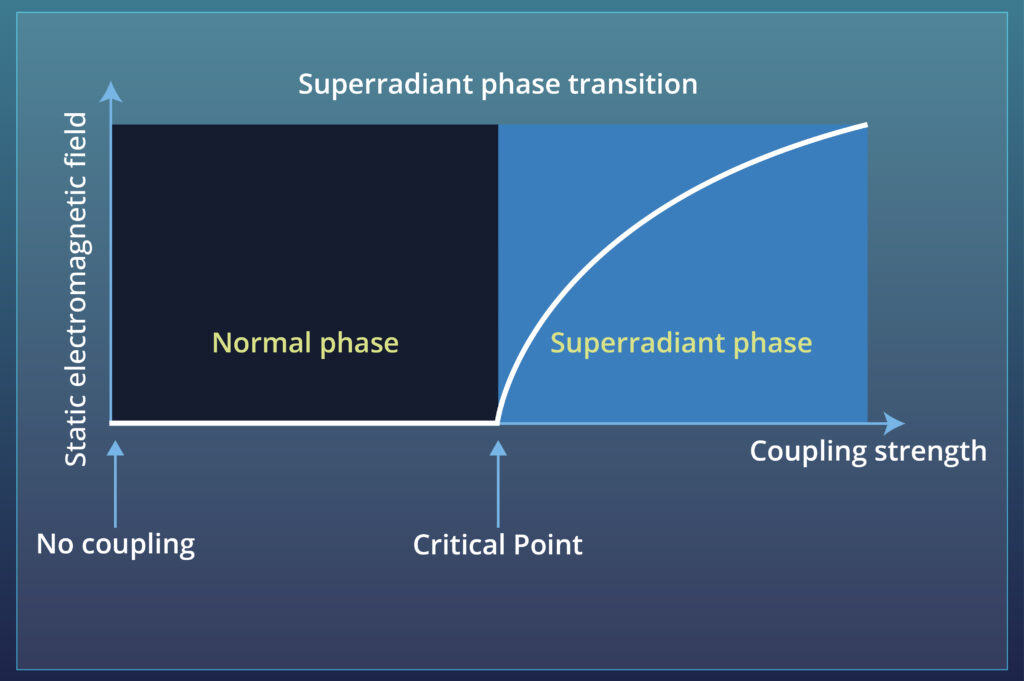
Light, or electromagnetic waves, and its interaction with matter is being extensively studied mostly in non-equilibrium situations, which are not in thermal equilibrium but rather in which energy flows between inside and outside of the system of interest. For example, in devices with LEDs or lasers, an electronic energy is injected to the device, and then light energy is emitted outside. In contrast, there is no (net) energy flow in thermal equilibrium.
The superradiant phase transition (SRPT) is a phase transition in thermal equilibrium, accompanied by a spontaneous appearance of a static (temporally non-oscillating) electromagnetic field and a static electromagnetic polarization (or persistent current) in matter (Figure 1).
Whereas the SRPT occurs in thermal equilibrium—the critical point at which a system transitions from a normal phase, with weak light-matter coupling and an incoherent electromagnetic field, to a superradiant phase, with strong coupling and a static coherent electromagnetic field—SRPT originates from the interaction between the electromagnetic fields and matter (Figure 2), which has long been the target in the research field of light.

In other words, the SRPT is a phenomenon that bridges the research fields of light and of thermodynamics (or statistical physics), which have been studied mostly in non-equilibrium and in thermal equilibrium, respectively. This is why we focus on SRPT and why we feel that SRPT has the potential to advance both technology as well as our understanding of the world.
For example, we have revealed that a quantum fluctuation of photons and matter can be highly suppressed (called quantum squeezing) at the critical point of SRPT even in thermal equilibrium (Hayashida et al.), in contrast to the fact that such an effect has been discussed mostly in the non-equilibrium situations. The quantum squeezing in thermal equilibrium is robust against any noise in contrast to the non-equilibrium one, thus we are now trying to construct noise-robust quantum technologies, such as quantum sensing and quantum computing by taking advantage of the quantum squeezing in thermal equilibrium.
Further, because SRPT is the phenomenon bridging non-equilibrium and thermal equilibrium, we are trying to find direct energy conversion processes from heat to coherent light (such as laser light), which may help us utilize waste heat and save energy in the world. Furthermore, light obtained by that process may be transferred via optical cables to places that are lacking in light or other energy sources, thereby enabling better access to energy for all.
SRPT is, however, not yet observed experimentally since its proposal in 1973. We have found theoretically that a superconducting-current version of SRPT can occur in a superconducting circuit (read more here). Further, we have demonstrated experimentally and theoretically that a spin-wave (magnon) version of SRPT occurs in a magnetic material ErFeO3 (Bamba et al.). We are now trying to theoretically find materials that show SRPT where an electromagnetic field appears spontaneously. We are also trying to find evidence of SRPT (or its spin-wave version) experimentally via an international collaboration with.
In this way, we are now trying to find evidence for SRPT and to demonstrate its functionalities.